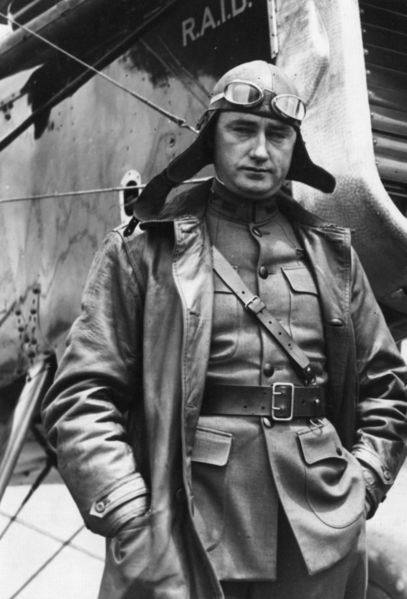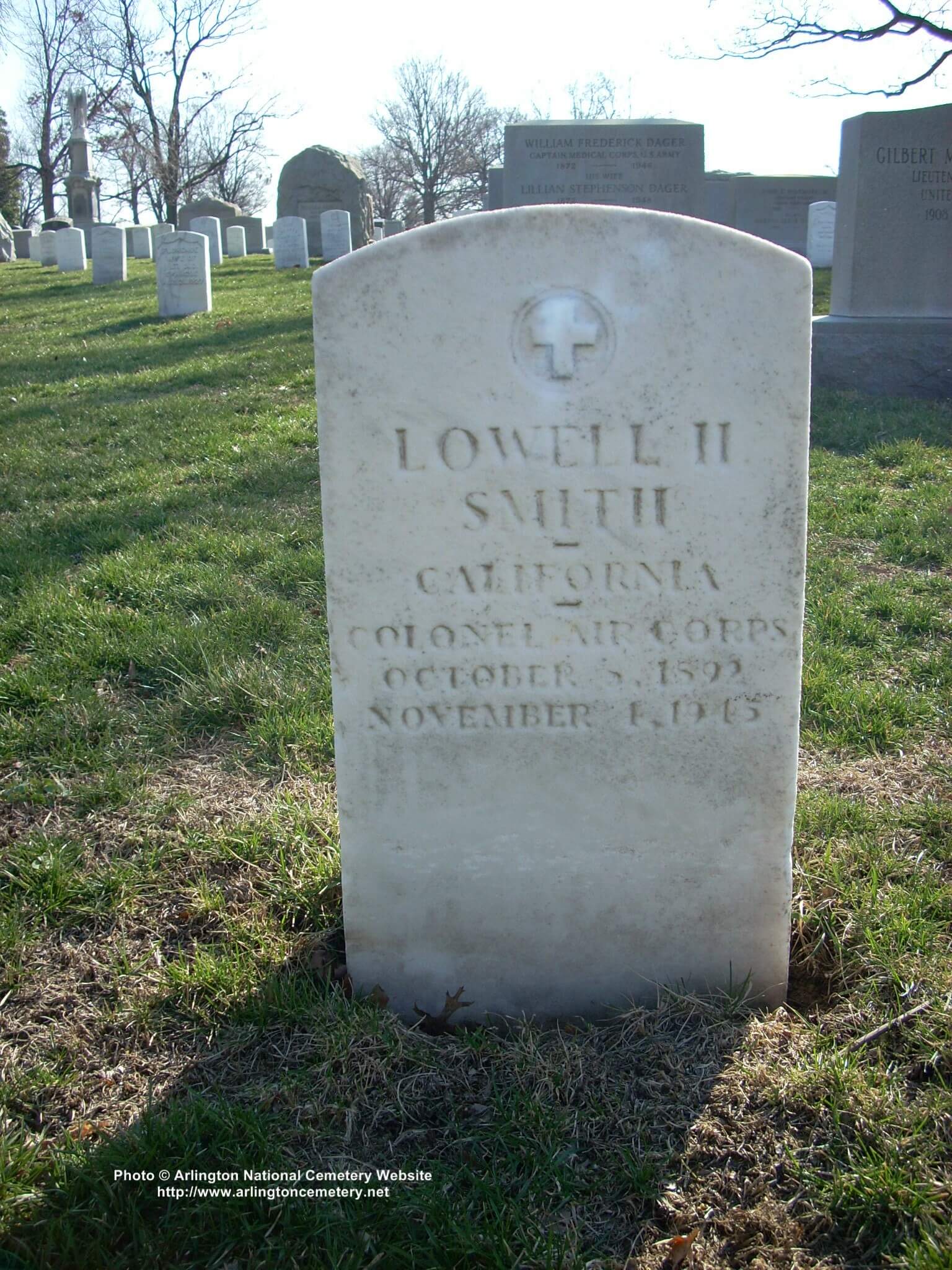Lowell H. Smith (1892—November 4, 1945) was a pioneer American airman, who perfomed the first mid-air refueling (along with Lieuenant John P. Richter), setting an endurance record of 37 hours on De Havilland DH-4B (August 23, 1923). Smith, as the First Lieutenant, with mechanic Leslie P. Arnold, was also abroad “Chicago” airplane, which among two others made the first aerial circumnavigation in 1924. Smith held 16 records for military aircraft in speed, endurance and distance.
Smith first became an aviator for the Mexican Army (1915), but in 1917 joined the Army Air Service. In 1919 he found himself able to participate in the Great Transcontinental Air Race. However on the evening of October 15 his aircraft was destroyed by fire when lanterns being used by mechanics ignited a wing. Smith received permission to continue the race if he could find a replacement aircraft. Prospects seemed dim until Major Carl Andrew Spaatz arrived on October 17. It took only a little pleading before Spaatz agreed to turn over his plane to Smith. Going on to conquer wind and weather, Smith became the first West Coast flier to complete the round trip when he arrived in San Francisco on October 21.
In 1936, Smith was appointed to the War Department Board for standardizing airplane design and procurement procedures. Under his guidance from February, 1942, to March, 1943, Davis-Monthan became the top training base for B-17 and B-24 crews during World War II.
Smith died from injuries suffered when he fell from a horse in the Catalina Foothills, Arizona and was buried at Arlington National Cemetery. Lowell H. Smith Elementary School at Tucson, Arizona was named after him.
A very early Army aviator, in 1915 he served as a pilot with the revolutionary forces of Pancho Villa in Mexico. He later set a record for remaining in air for 37 consecutive hours. In 1923 he was first pilot to take part in air-to-air refueling of an aircraft. He was a major participant in the US Army Air Service 1924 Flight Around The World.
He died on November 4, 1945 and was buried with full military honors in Section 3 of Arlington National Cemetery.
On April 6, 1924, four Douglas World Cruisers and eight crewmen set out from Seattle, Washington, to attempt the first-around-the-world airplane flight. One hundred seventy-five days later, on September 28, three of the planes and crews became the first to circumnavigate the earth by air. Other nations were competing against the United States to make the first world flight. The Americans success was largely a result of extensive planning. The best qualified pilots and mechanics were recruited. Twenty-eight nations along the flight path cooperated. Stations were established to supply the thousands of gallons of gasoline and oil necessary to make the trip. Named after four major American cities: Seattle, Chicago, Boston, and New Orleans, the airplanes could operate from land or water and were equipped with the latest navigational aids. Even so, fog, blizzards, thunderstorms and sand storms took a toll. The “Boston” was forced to land at sea, subsequently sank and had to be replaced by a backup plane. Later, while flying in dense fog, the “Seattle” crashed on an Alaskan mountainside and was not replaced. No serious injuries resulted from either accident so the six crewmen continued on and made history in the “Boston II,” “Chicago,” and “New Orleans.” Today world air travel is accomplished in a fraction of the time of those 1924 flights but the men and airplanes participating are credited with one of aviation’s greatest achievements.
“CHICAGO”
1ST. LT. LOWELL H. SMITH, PILOT
1ST. LT. LESLIE P. ARNOLD, MECHANIC
“BOSTON”
1ST. LT. LEIGH WADE, PILOT
SGT. HENRY H. ODGEN, MECHANIC
“NEW ORLEANS”
1ST. LT. ERIK H. NELSON, PILOT
2ND. LT. JOHN HARDING, JR., MECHANIC
The First Transworld Flight, 1924
LOWELL SMITH (1892-1945)
Colonel Lowell H. Smith. Aviation pioneer, Army officer and pilot. He first became an aviator for the Mexican Army (1915), but in 1917 joined the Army Air Service. He pioneered air-to-air refueling of in the early 1920s and commanded the Army’s Around the World Flight (6 Apr-28 Sept 1924). For these services he received the
Distinguished Flying Cross and the Distinguished Service Medal respectively. He held 16 records for military aircraft in speed, endurance, and distance.
Colonel Lowell H. Smith, was a pioneer airman who dropped the first bomb from an airplane. He was the second commander of Davis-Monthan Air Force Base, a colorful figure of the old Air Corps with a military ,career beginning in 1917 and ending with his death in Tucson in 1945 from injuries suffered when he fell from a horse in the Catalina Foothills.
In 1936, Smith, a captain, was appointed to the War Department board for standardizing airplane design and procurement procedures. Under his guidance from February, 1942, to March, 1943, Davis-Monthan became the top training
base for B-17 and B-24 crews during World War II. Smith died on November 4, 1945. He was buried in the National Cemetery at Arlington, Virginia.
SMITH, LOWELL H
- COL ARMY AIR FORCE USA
- VETERAN SERVICE DATES: Unknown
- DATE OF DEATH: 11/04/1945
- DATE OF INTERMENT: 10/11/1945
- BURIED AT: SECTION SOU SITE 1556-A
- ARLINGTON NATIONAL CEMETERY
Michael Robert Patterson was born in Arlington and is the son of a former officer of the US Army. So it was no wonder that sooner or later his interests drew him to American history and especially to American military history. Many of his articles can be found on renowned portals like the New York Times, Washingtonpost or Wikipedia.
Reviewed by: Michael Howard


